The Division Director Talks Class Roles and Multiplayer Story Progression
We check out a new demo of The Division and talk to game director Ryan Barnard about the "holy trinity" of RPG classes and telling a story in multiplayer.
Kingdom Come: Deliverance 2 - Official Cinematic Announcement Trailer Stellar Blade - BIBI ‘Eve’ Official Music Video Trailer | PS5 Apex Legends: Urban Assault Collection Event Trailer Total War: WARHAMMER III - Elspeth von Draken Gameplay Showcase Genshin Impact - "Arlecchino: Sleep in Peace" | Official Character Teaser Potionomics: Masterwork Edition - Official Announcement Trailer Snowbreak: Containment Zone - "Gradient of Souls" Version Trailer Harold Halibut GameSpot Video Review Nancy Drew: Mystery of the Seven Keys | World Premiere Official Trailer Modern Warfare III & Warzone - Official Cheech & Chong Bundle Gameplay Trailer SteamWorld Heist II – Official Reveal Gameplay Trailer Dead Island 2 – Official SoLA Expansion Gameplay Launch Trailer
Please enter your date of birth to view this video
By clicking 'enter', you agree to GameSpot's
Terms of Use and Privacy Policy
At first glance, Ubisoft's post-apocalyptic game The Division may look like a straightforward shooter with co-operative elements. Dig a little deeper beneath the surface however, and you'll find that the game draws a lot of influence from the role-playing genre. After a 15-minute hands-off presentation of the game, we spoke with The Division director Ryan Barnard about multiplayer mechanics and story progression.
Focusing on the holy trinity of Tank-DPS-Healer
Veterans of the role-playing genre will be familiar with the formula that constitutes the holy trinity in RPGs, traditionally made up of a damage-soaking tank character, the support role, and the damage dealer. In The Division, Barnard cited the importance of class roles as something that would be a large focus in the game. "We want the concept of role importance in a group. We really want to support that," he said.
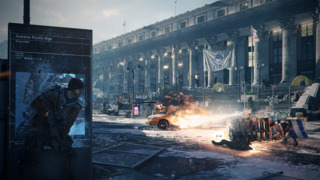
But would the game penalize players who didn't necessarily fill out the holy trinity in their squad?
According to Barnard, it would be "totally fine" for a crew of players filling similar roles to tackle missions together. However, groups which spread out and filled a variety of roles would stand to gain more. "We also want to find challenges that not really require, but will highly reward players for creating a more varied group with the different roles represented," he said.
"You want to have content and things you do in a game that really push players to the limit. And in order to do that, you need to maximize the role that you're playing in the group," he explained. That being said, players are still able to split up across the map while in a group game, but such an approach would not be advantageous.
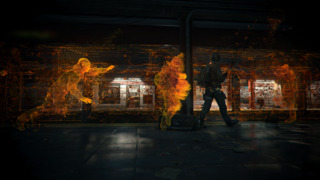
"We don't actually limit the players in the game at all. [But] because the game scales the difficulty of the content by how people are in your group, we're looking at the best ways to encourage players to stay together." Barnard said.
Because of the nature of group combat in The Division, the behavior of enemies will be directed by what Barnard refers to as "sometimes called threat, sometimes called aggro" in games. "We need an aggro system or a threat system that I can effect as a player. So that I can draw the attention of an enemy or drop the attention of an enemy based on skills and where I position myself in a fight," he explained. Even the player joining in via the companion app on tablet and supporting the team in-game as a drone will not be exempt to generating threat, with enemies able to shoot them down.
How the story will work in multiplayer
While players will be progressing through the skill trees in-game by earning experience, Barnard says not to expect the traditional quest line model. That is, we should not expect to be directed where to go by a quest giver. Instead, an area referred to as the Base of Operations will serve as an anchored hub for players to return to.
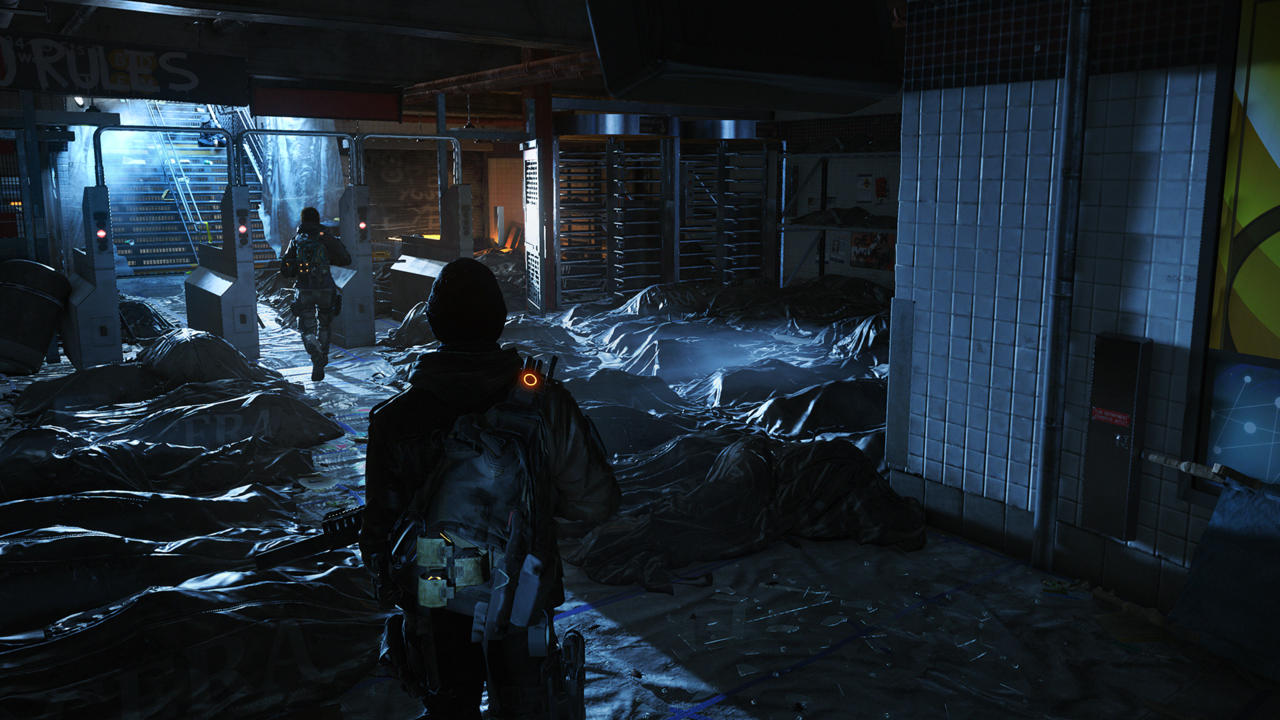
Characters who players meet as they progress through the narrative will also provide guidance through the story. "We have content that you come across as you open the map to choose, and then we also encourage the player to check out where there are narrative threats," Barnard said.
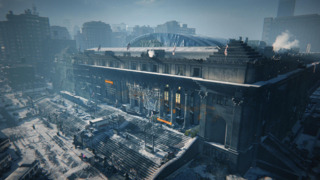
On the topic of how story progression will work for multiple players, Barnard referred to narrative checkpoints that would dictate whether group members could progress further in the story. "They are major milestone things that have happened that you will not be able to go past if you haven't seen that event or participated in it," he explained.
The game pulls the story progress from the leader of the party, who can move the story forward on their own after the group has split up. "When you're doing a narrative story you have moments that you want every player to experience, and we have those in The Division as well," Barnard said.
But can we expect to bring New York back to its prior state, before the disaster hit?
"You're never really repairing things back to the way they were... this is a changing event that happens in the beginning when you're activated; this catastrophic virus being launched," Barnard said.
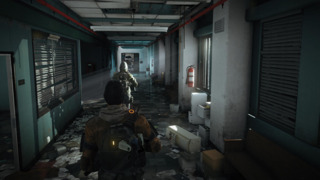
However, that does not mean your efforts are for naught. Certain visual representations reflecting the efforts of the players will be present in the game. For example, upgrading the clinic for enhanced medical facilities, which cleans up the dead bodies strewn about on the streets. "You see the effects there, but we don't visually change New York because you're not cleaning up the city, so to speak." Barnard said.
The map shown in the presentation had three status levels: security, contagion, and morale. While players will work to raise these levels and save the streets of New York, it remains to be seen what the end-state of the game will be. The Division is in development for the PC, Xbox One, and PlayStation 4 and will be released in 2015.
Got a news tip or want to contact us directly? Email news@gamespot.com
Join the conversation